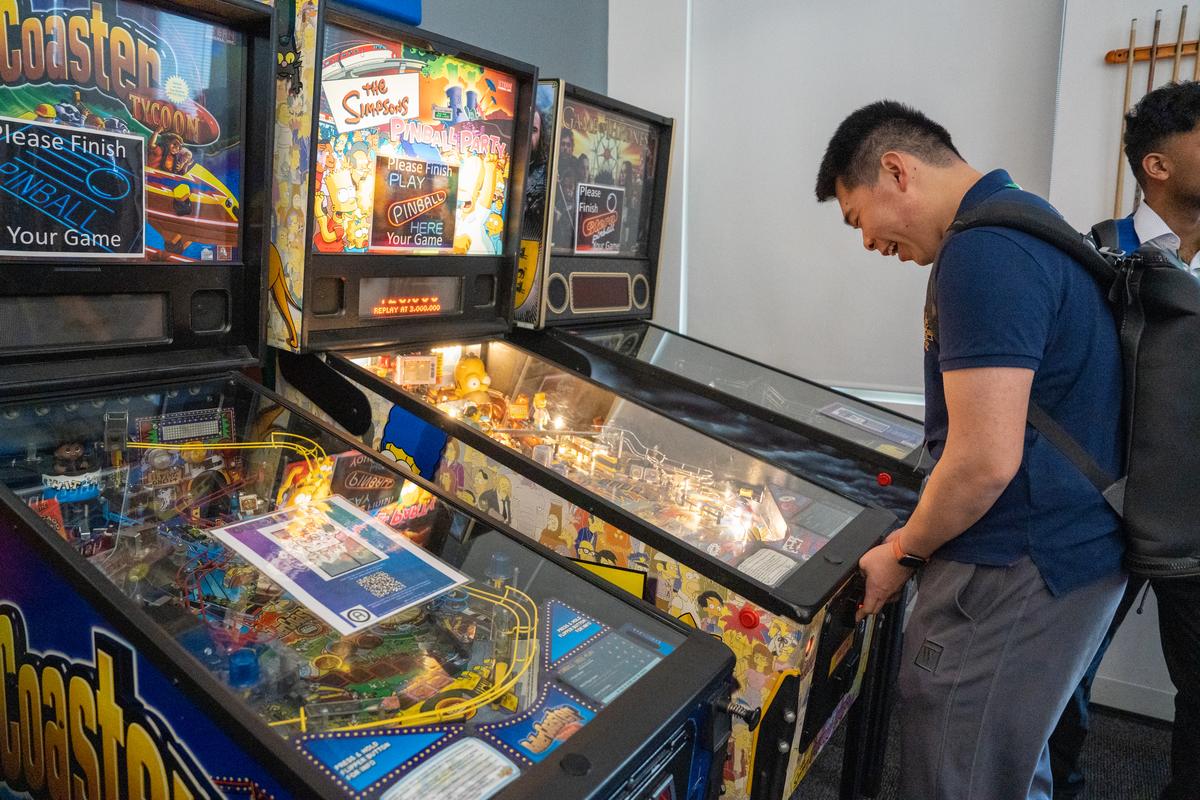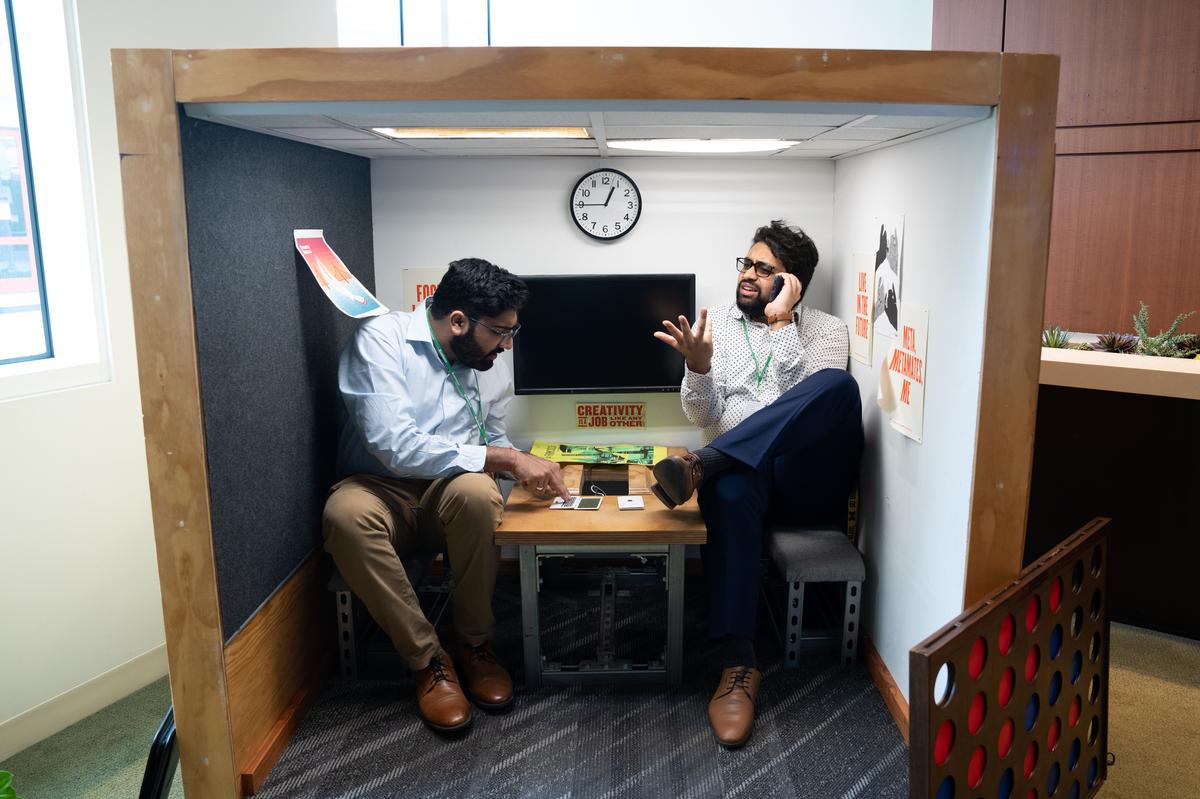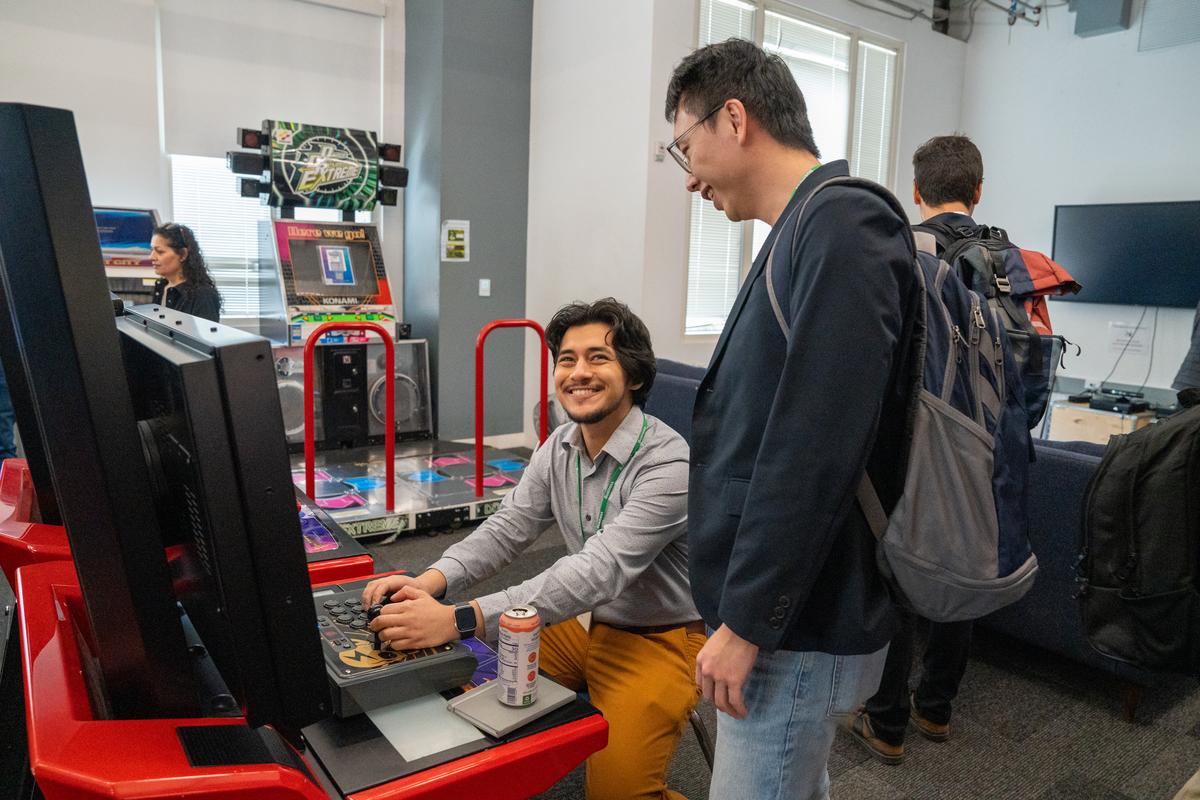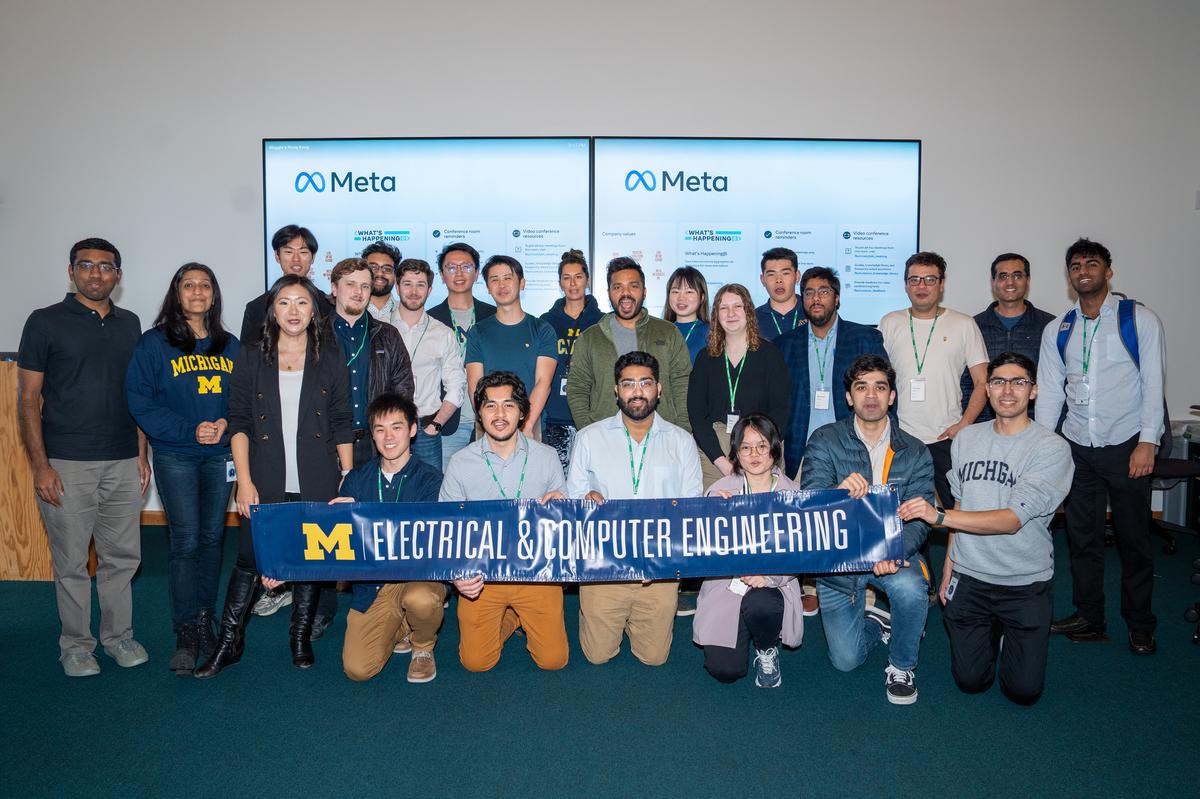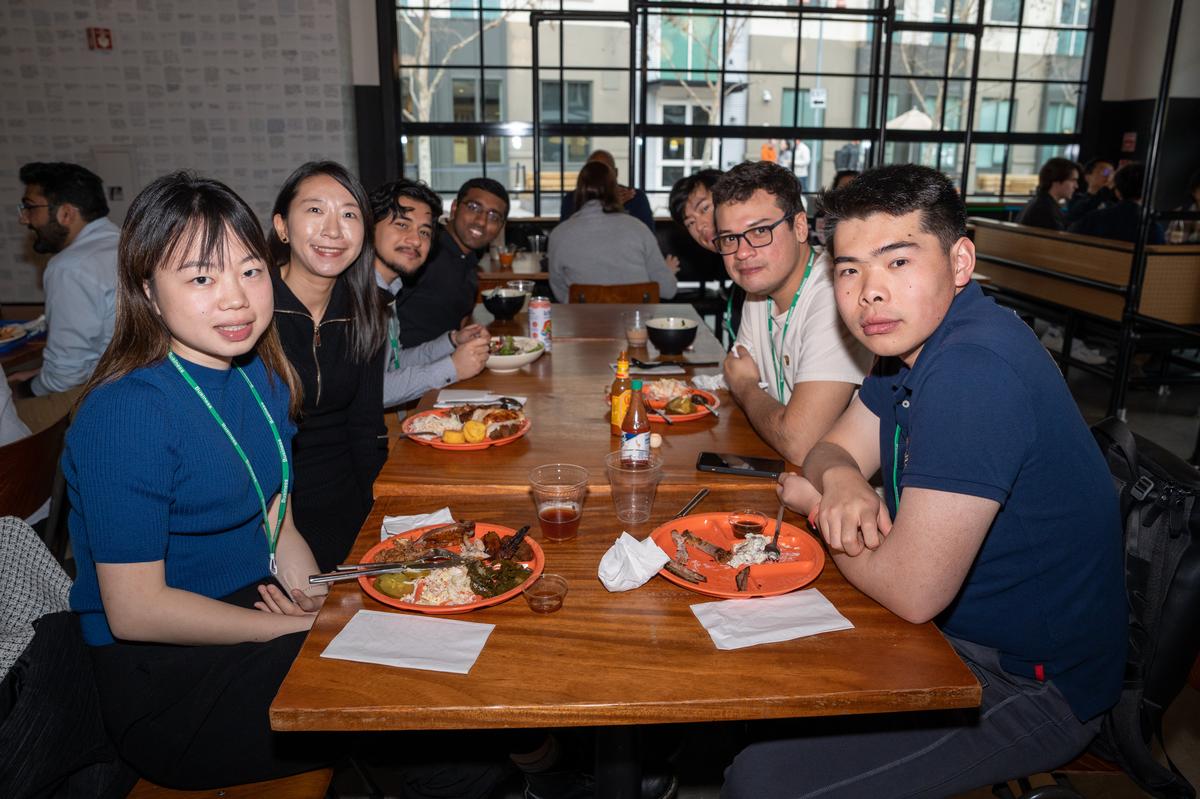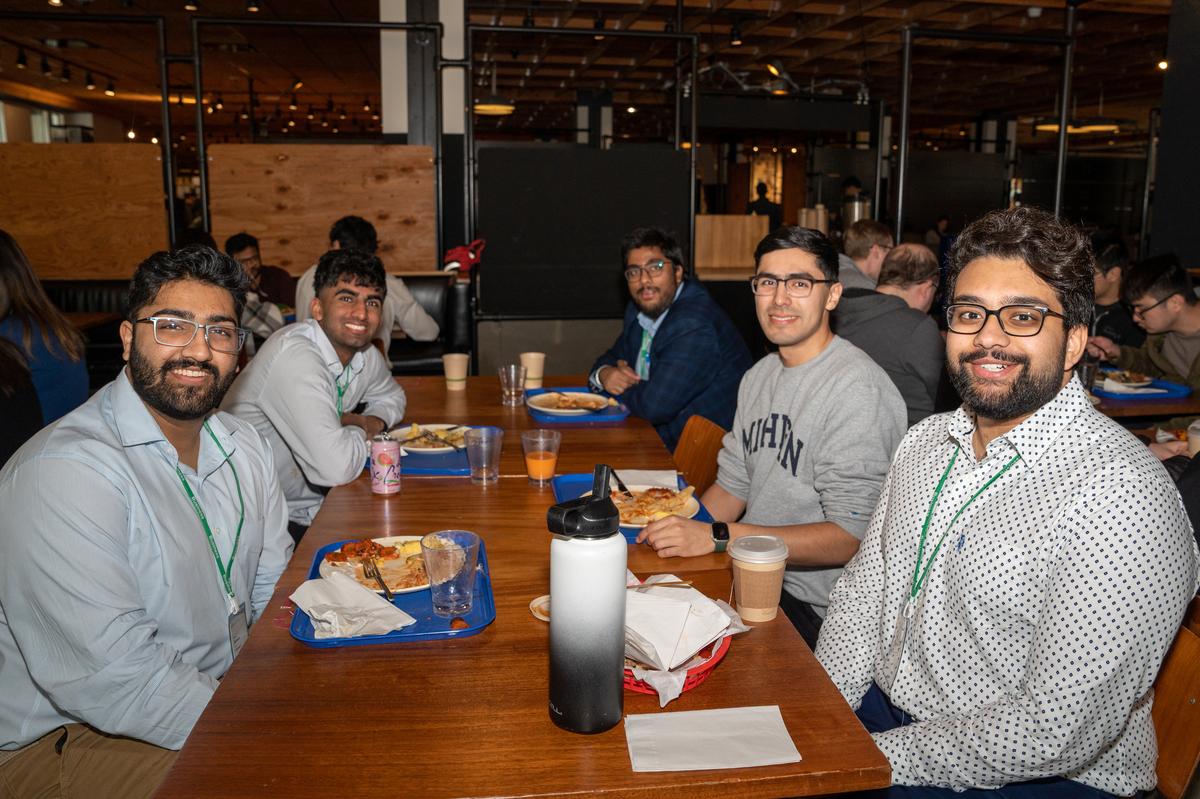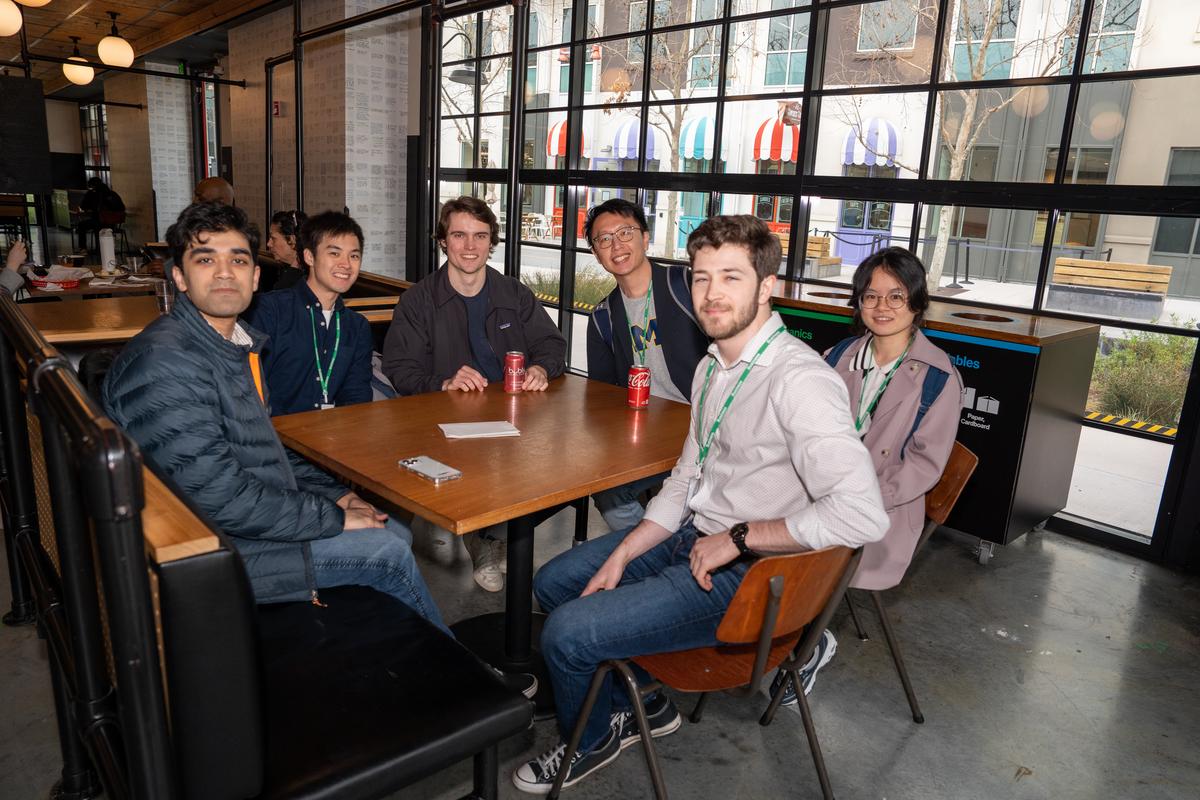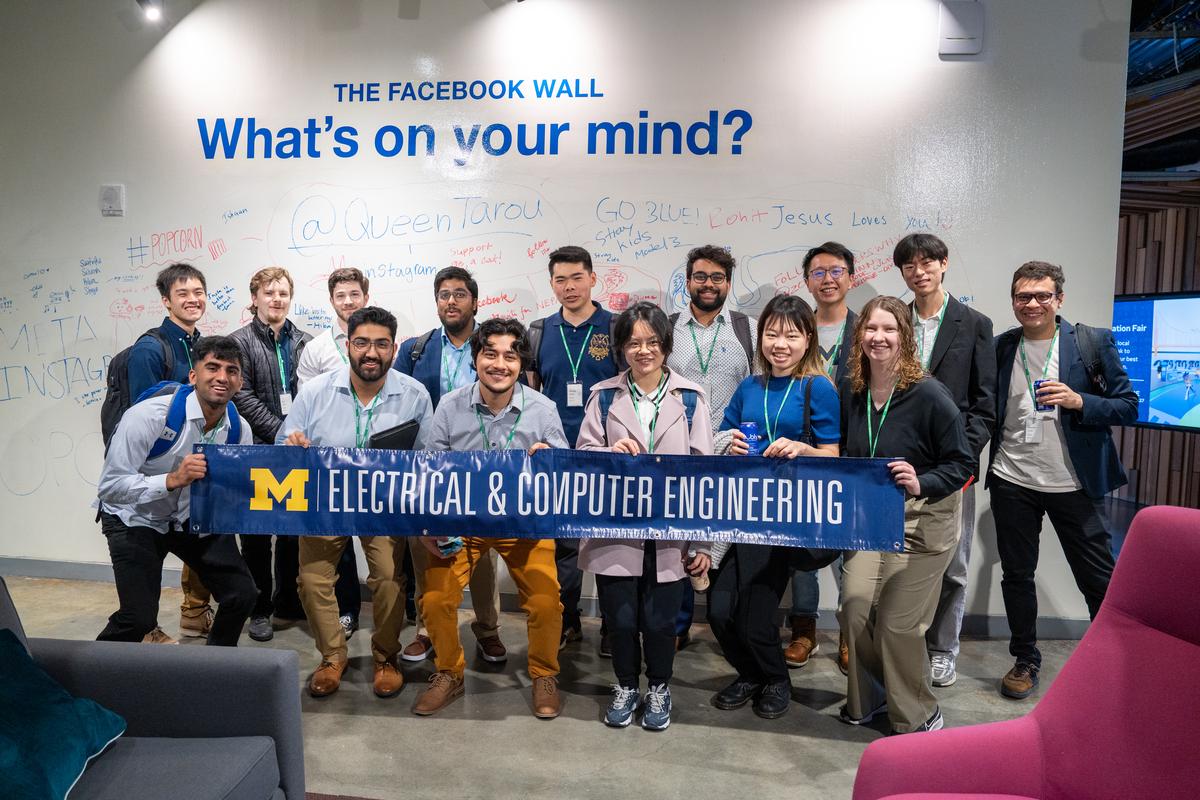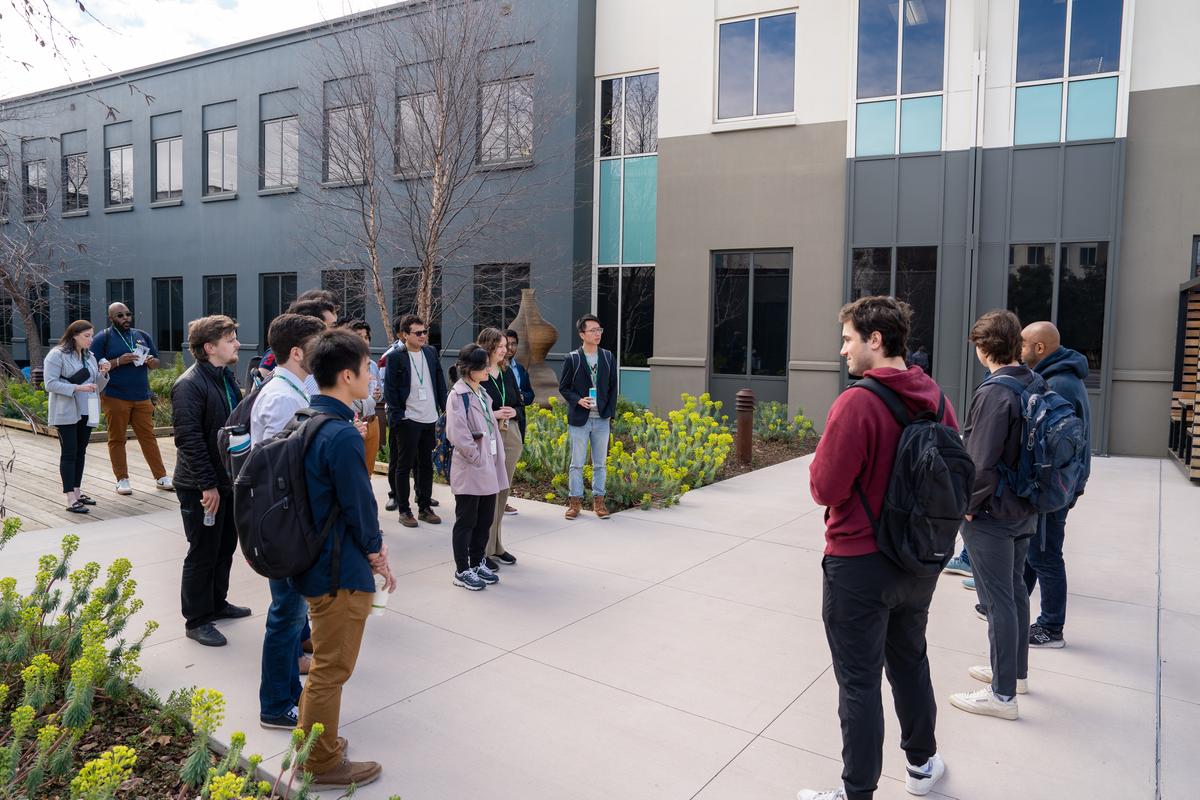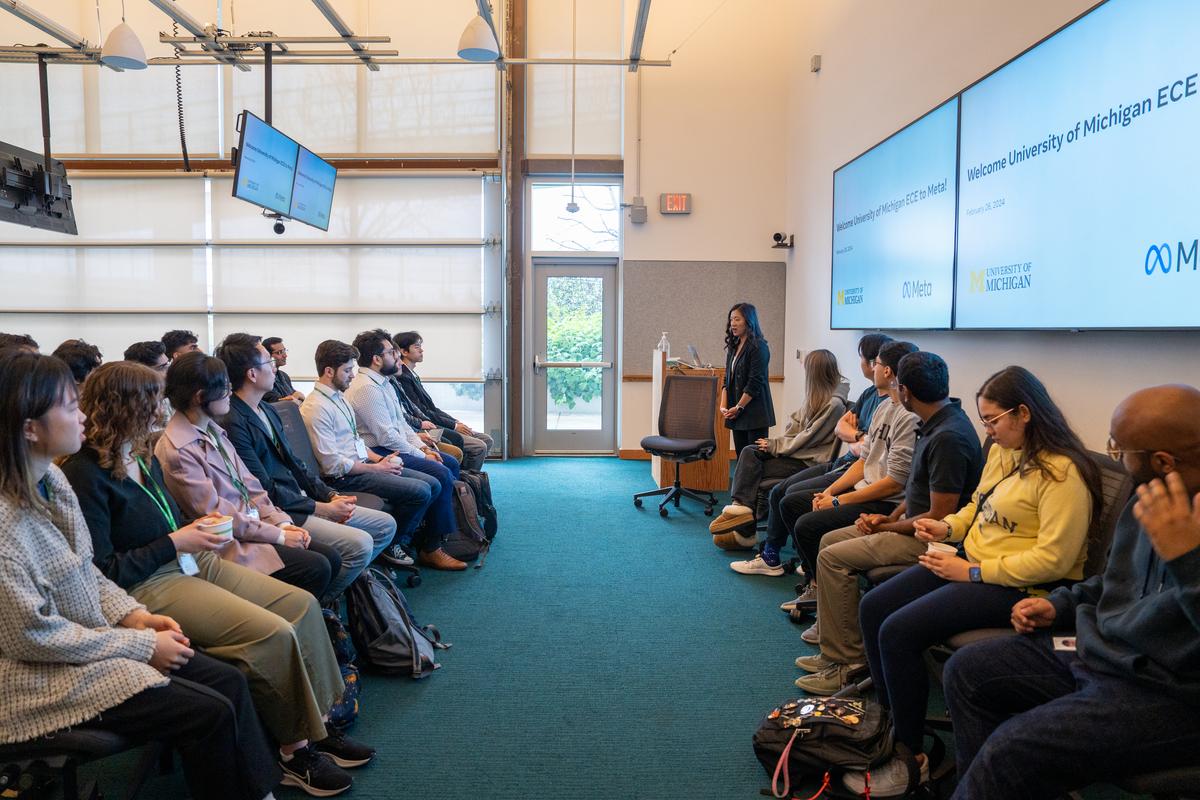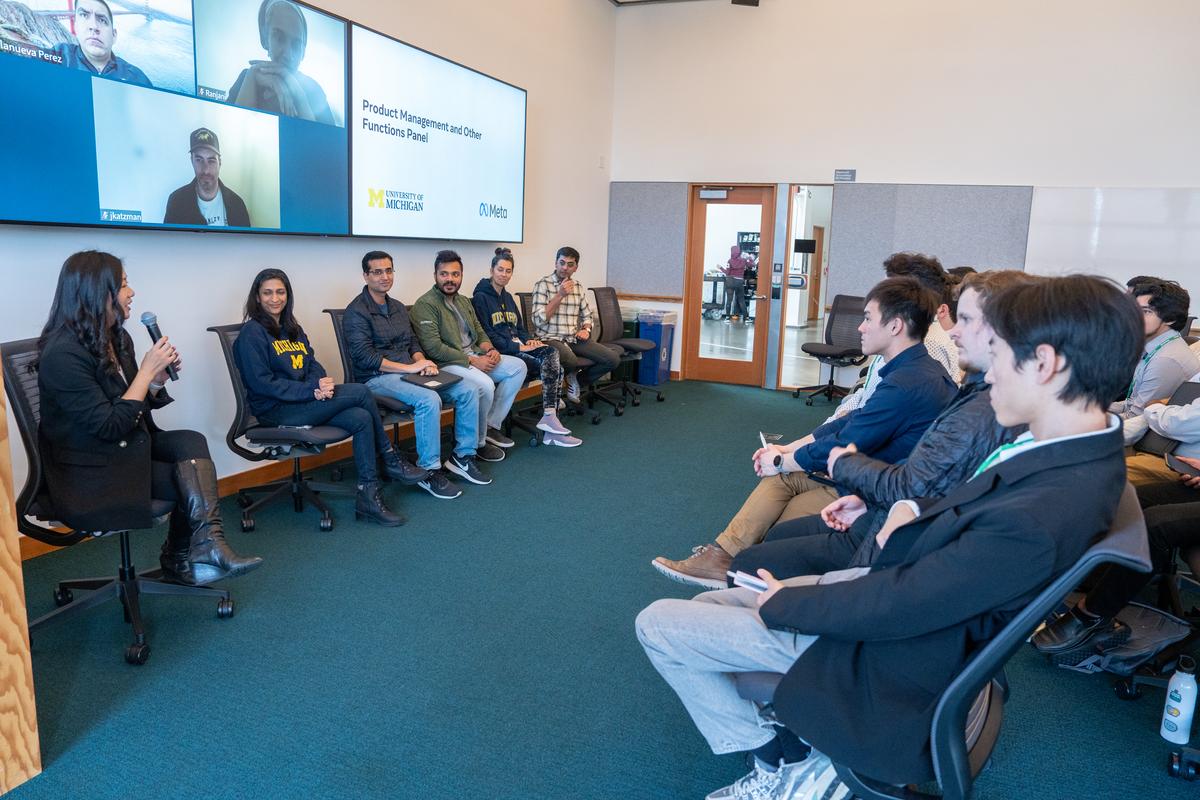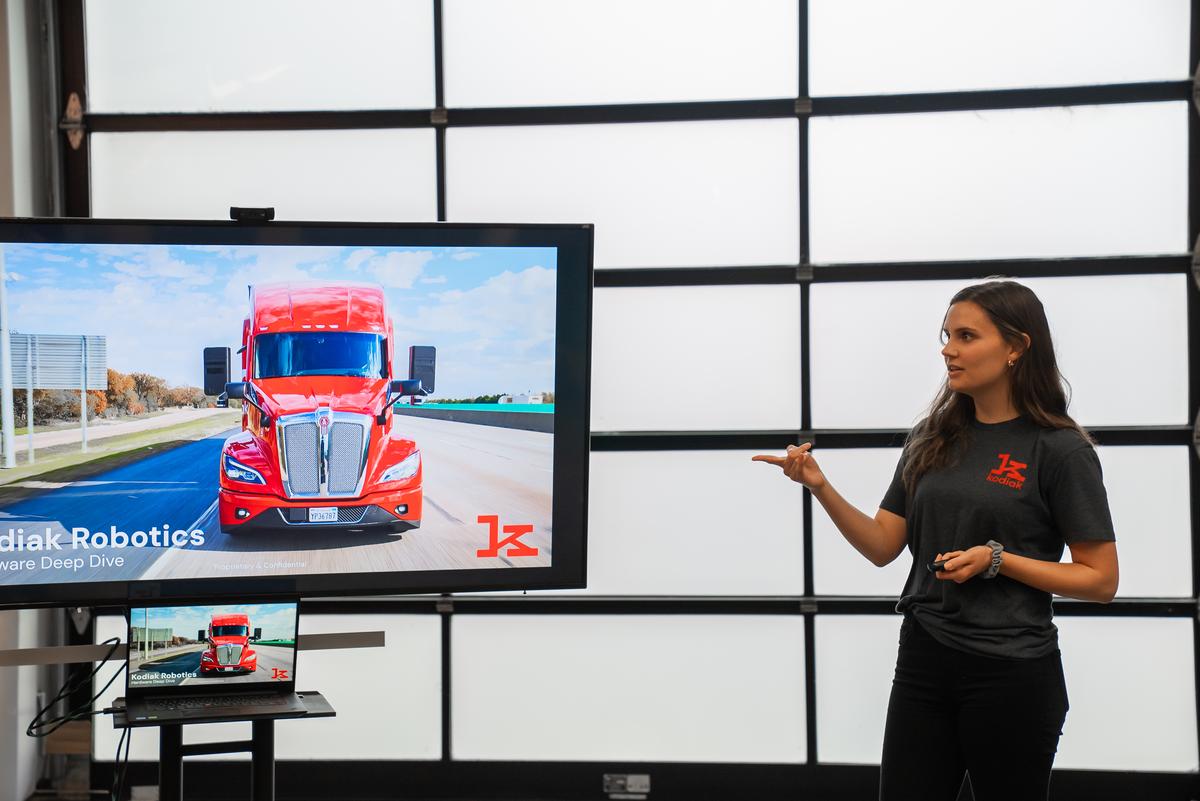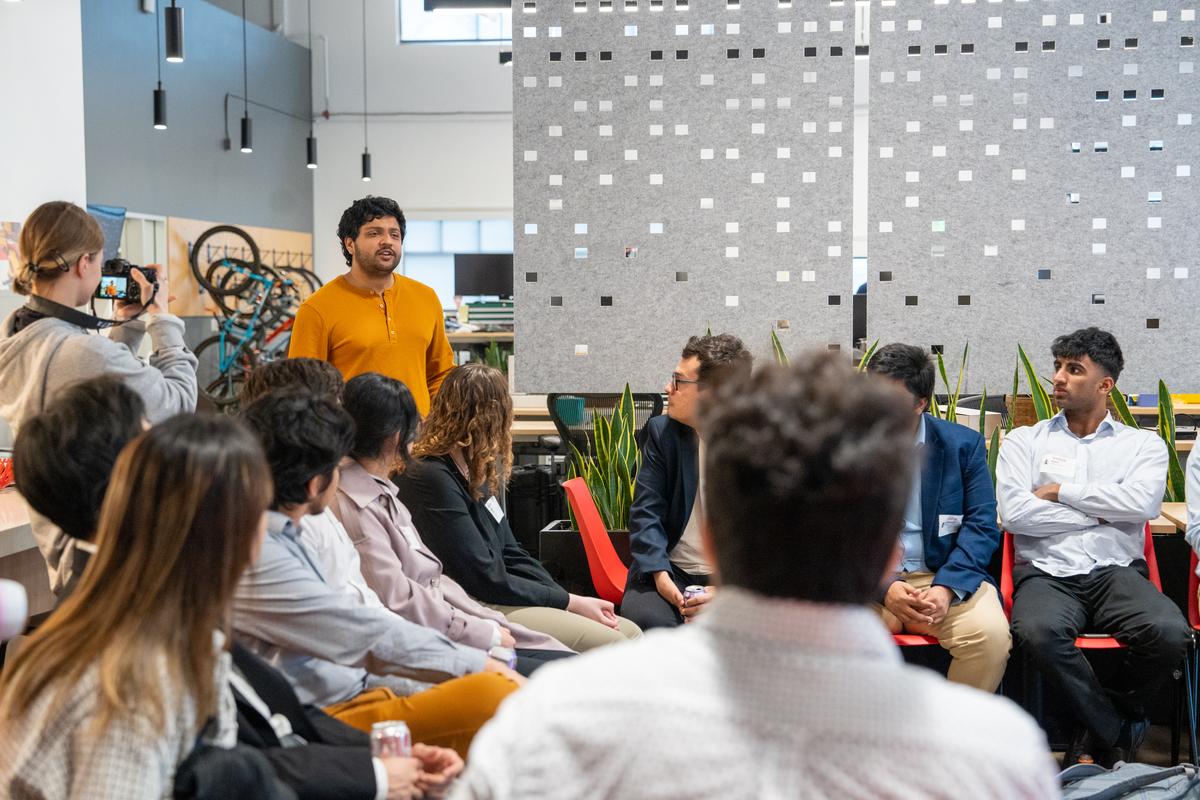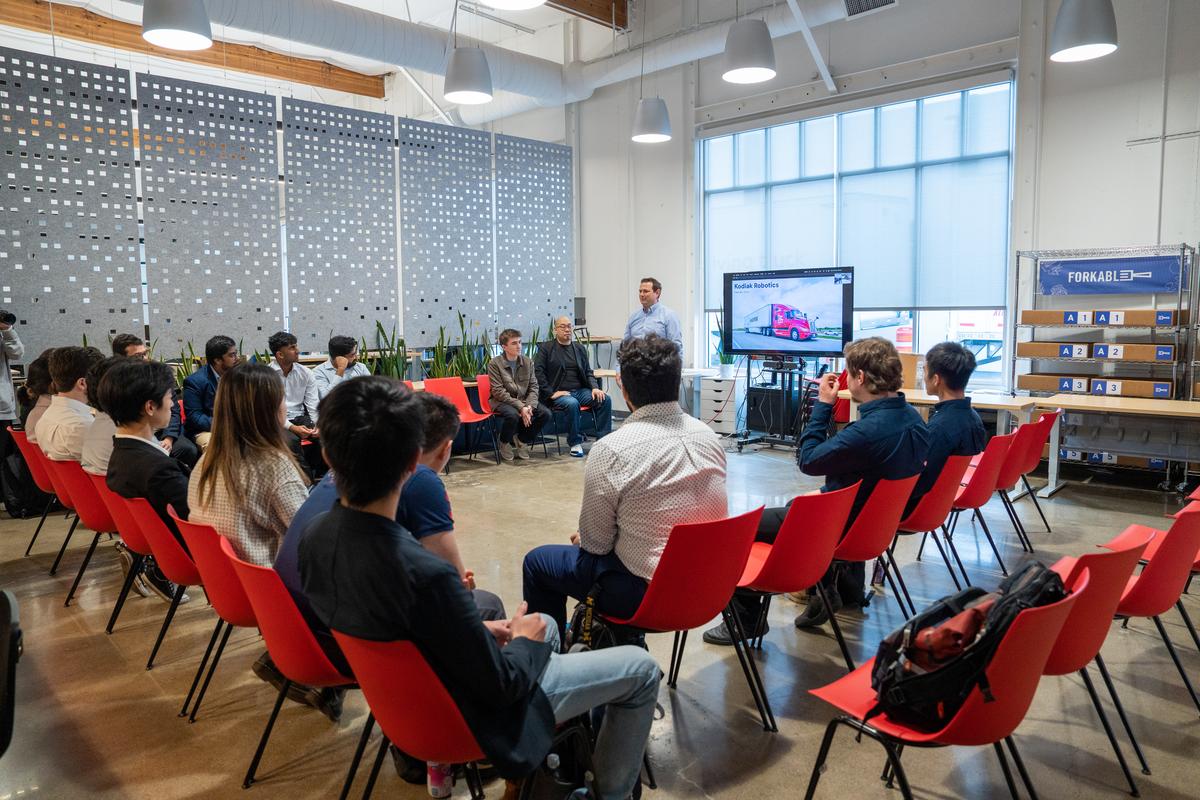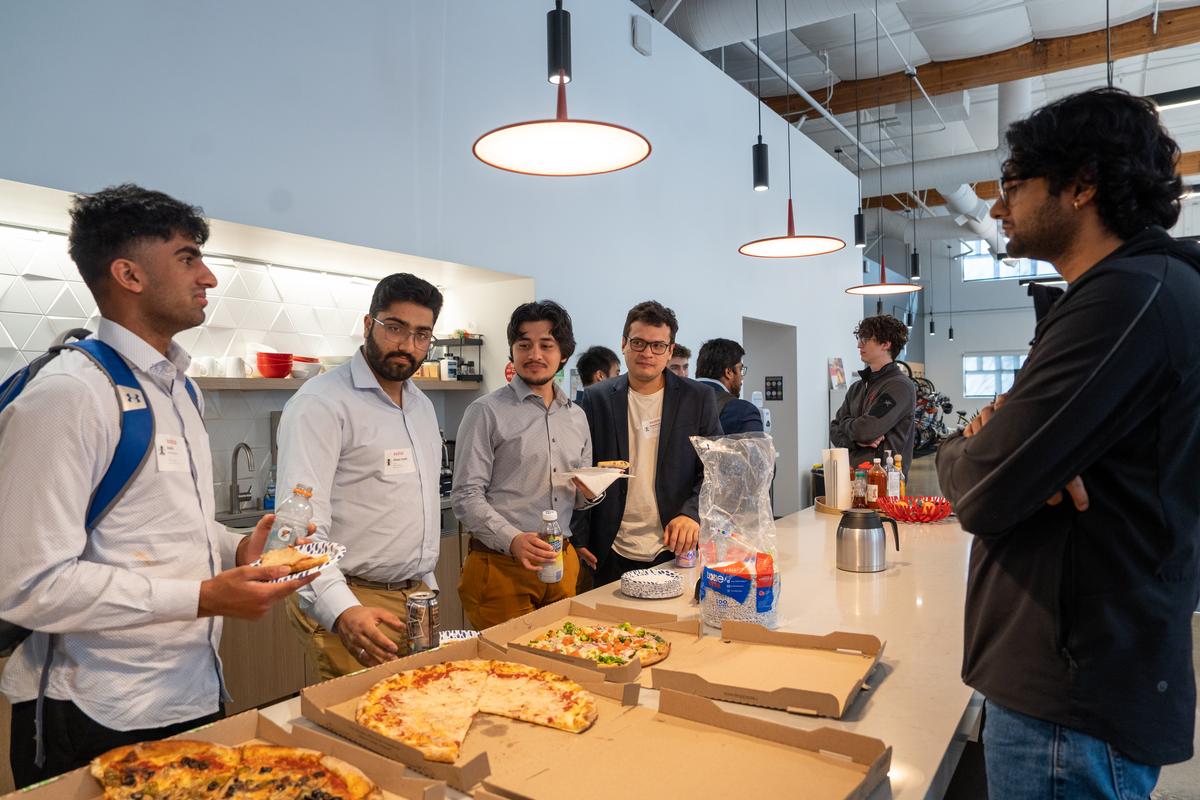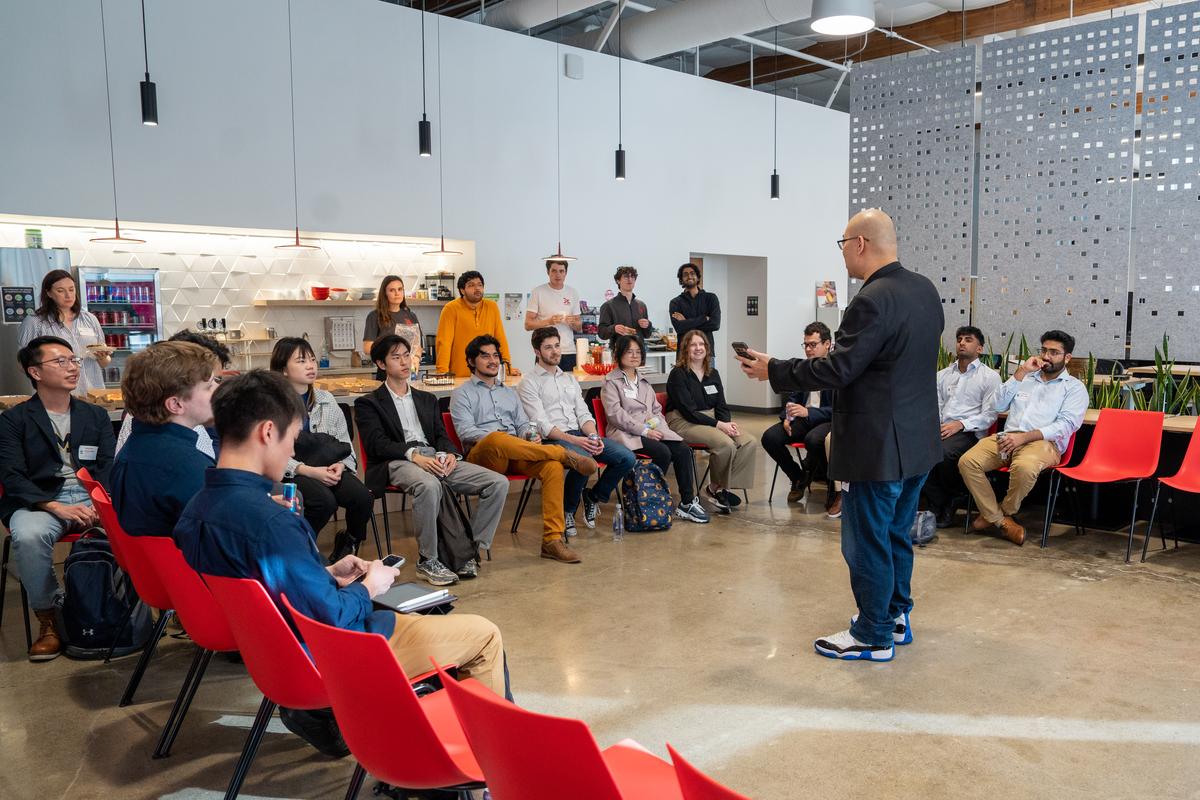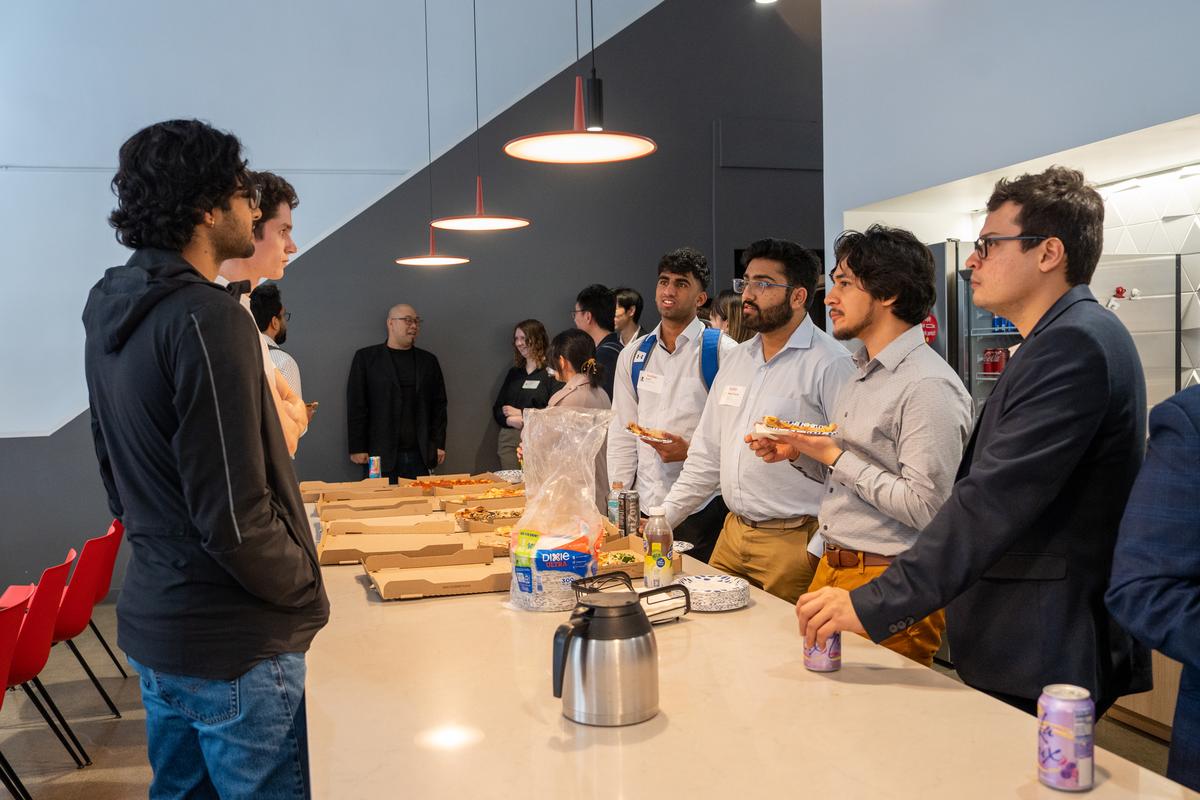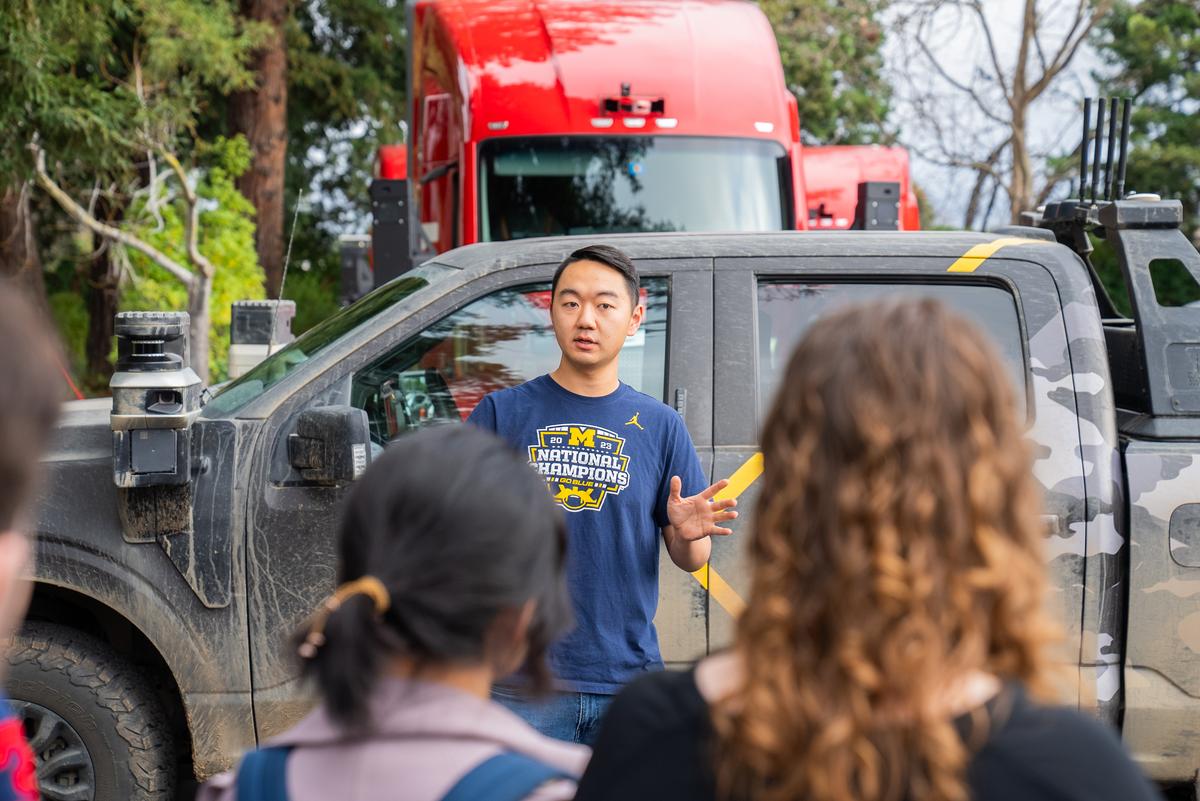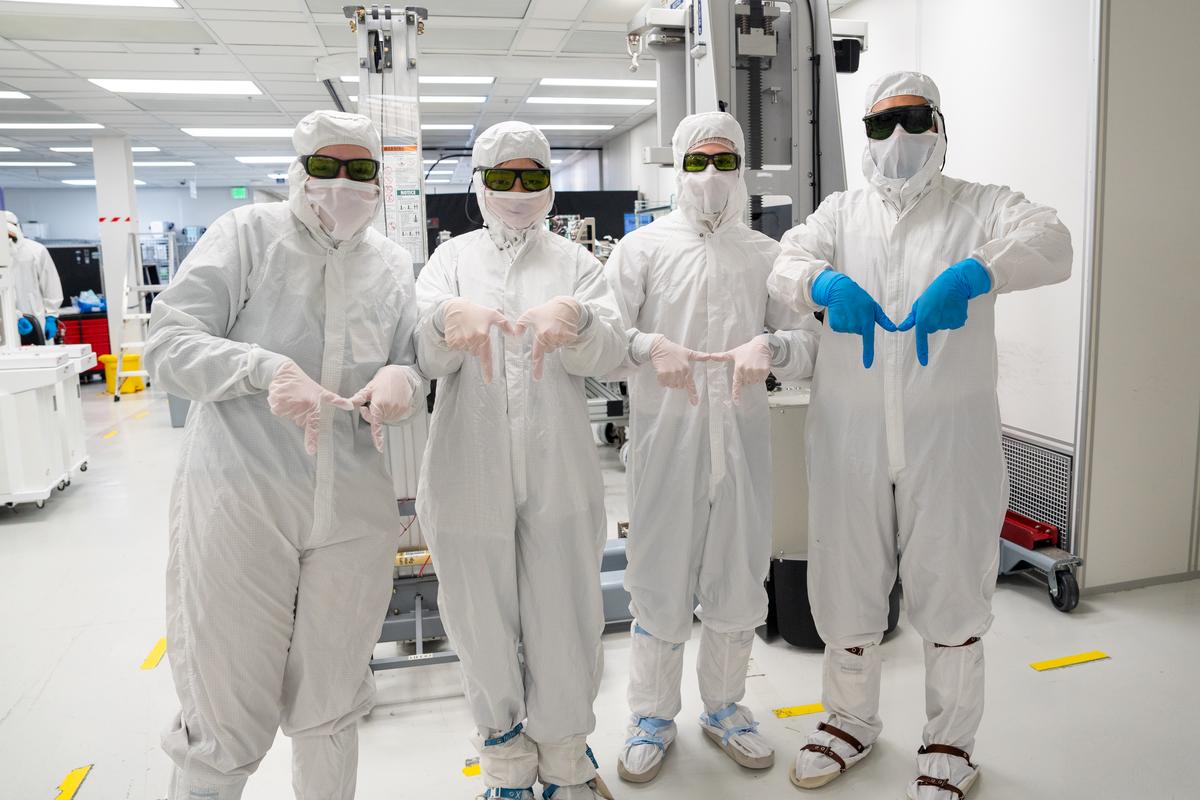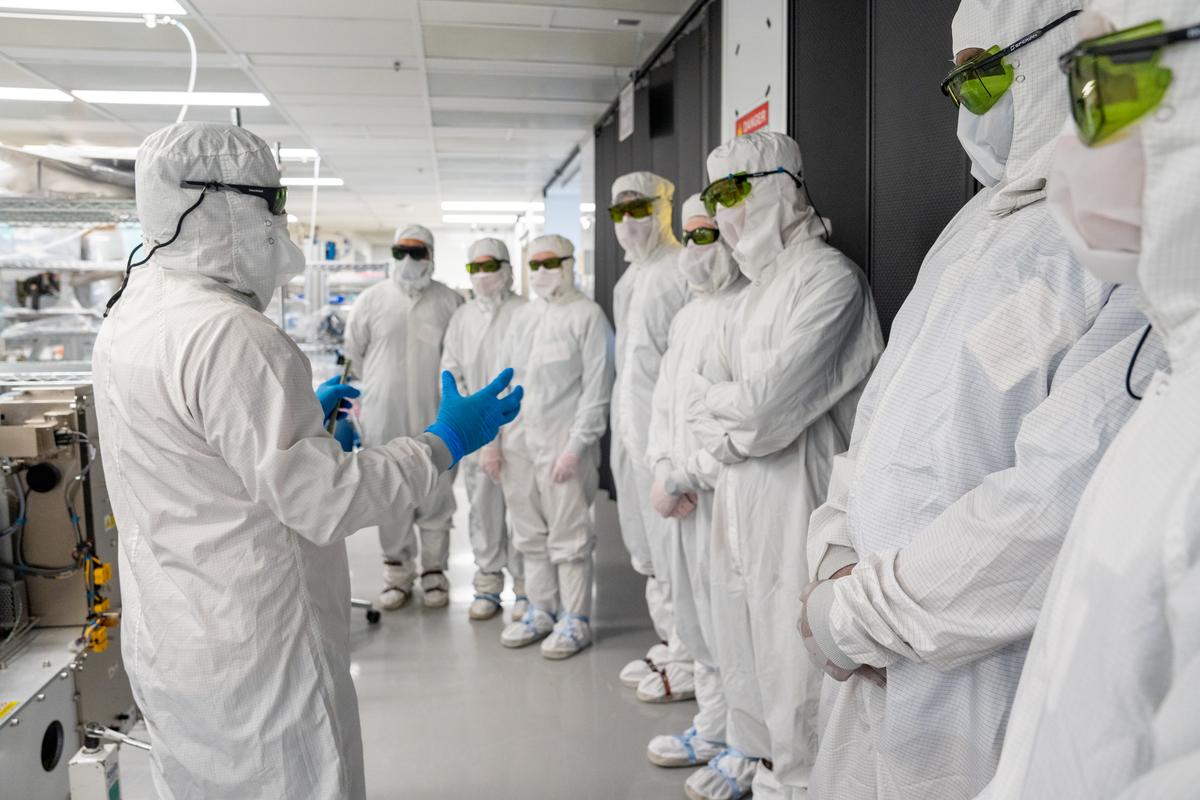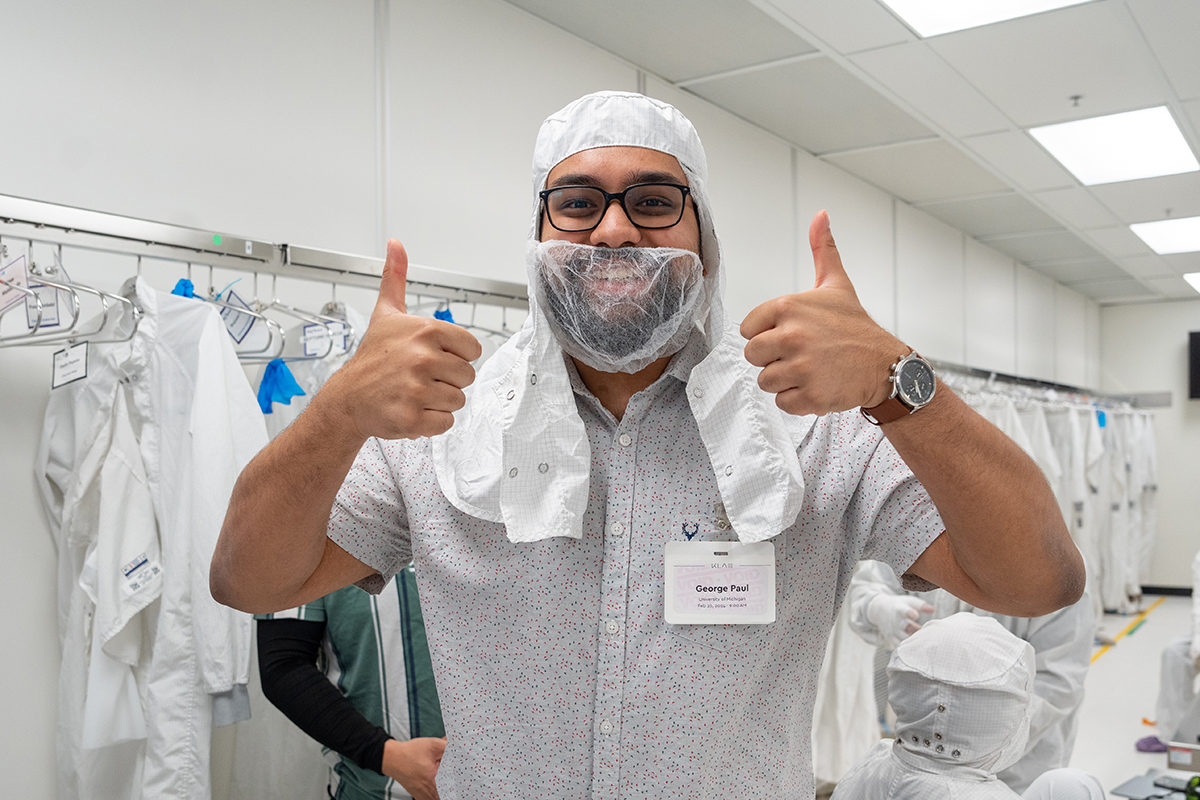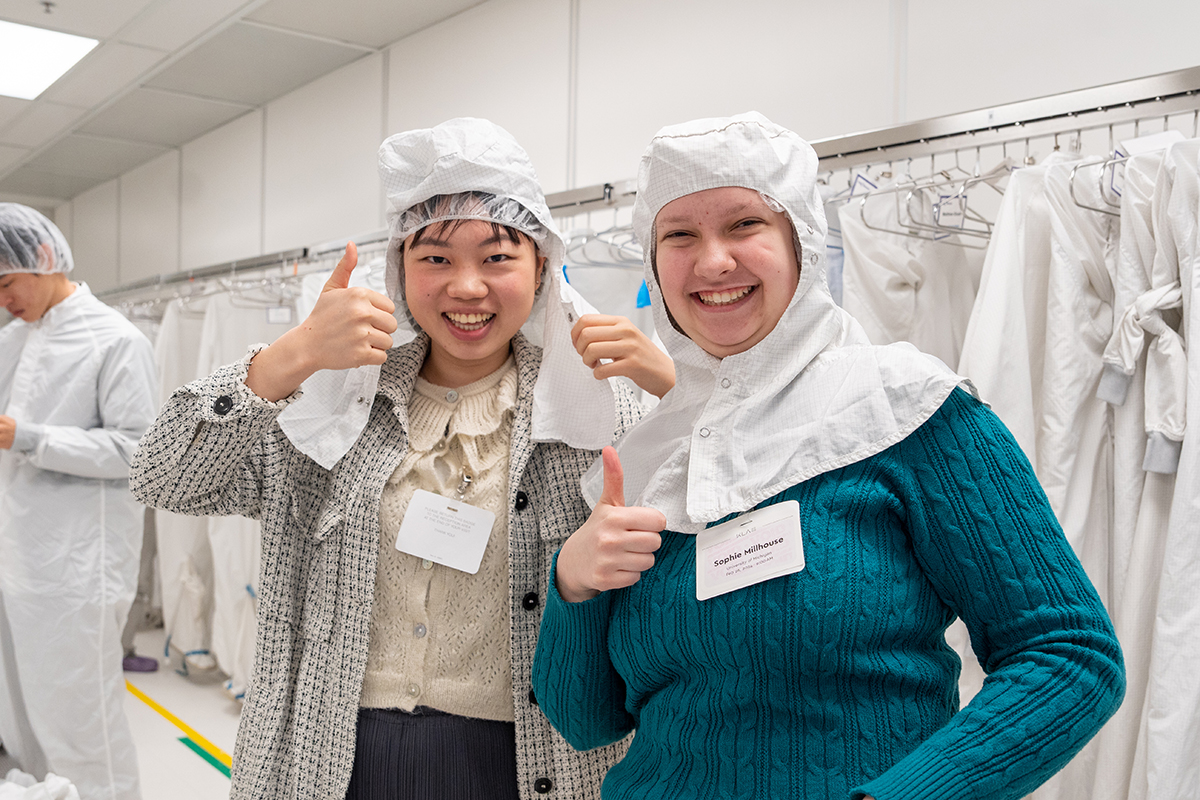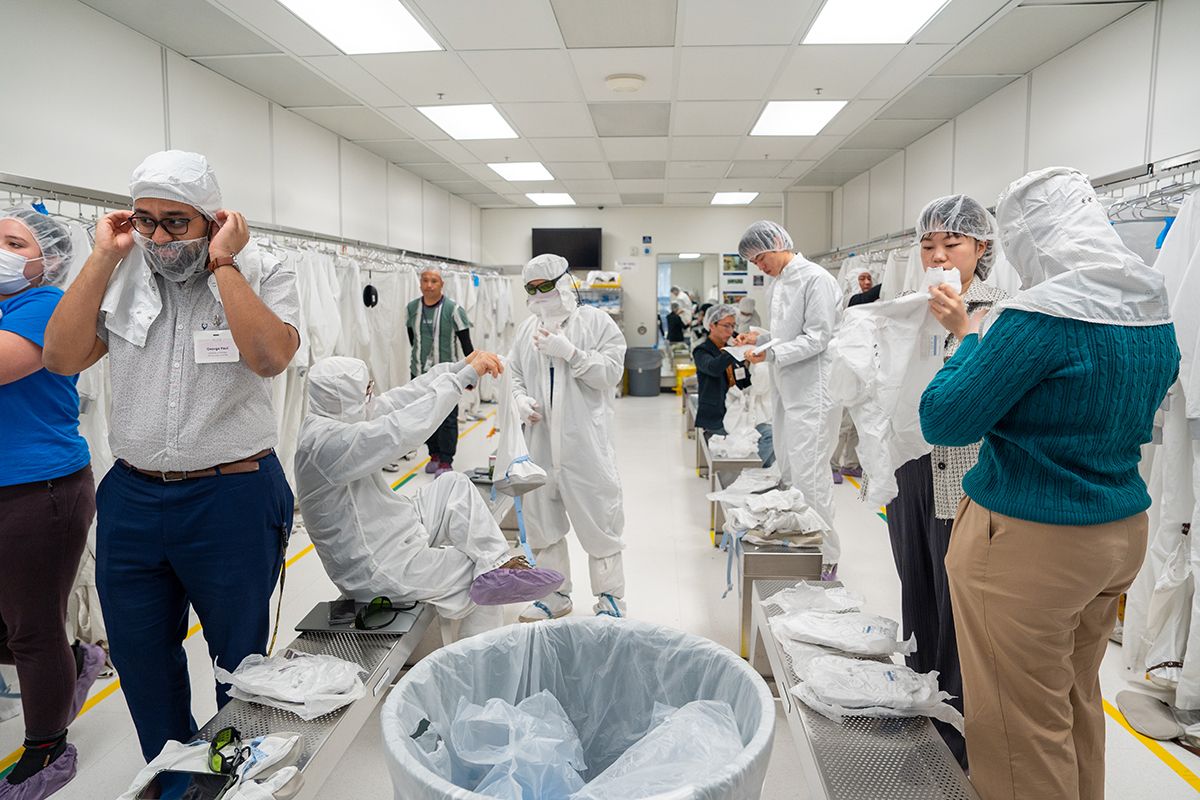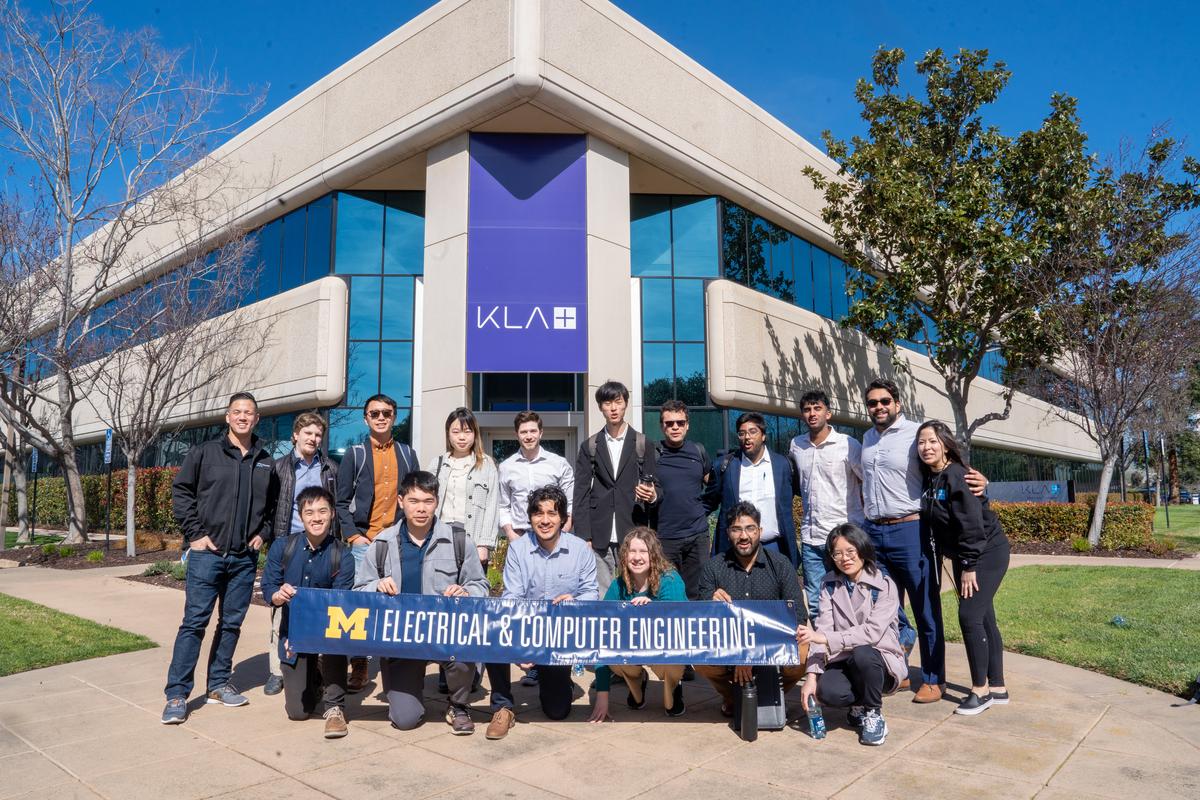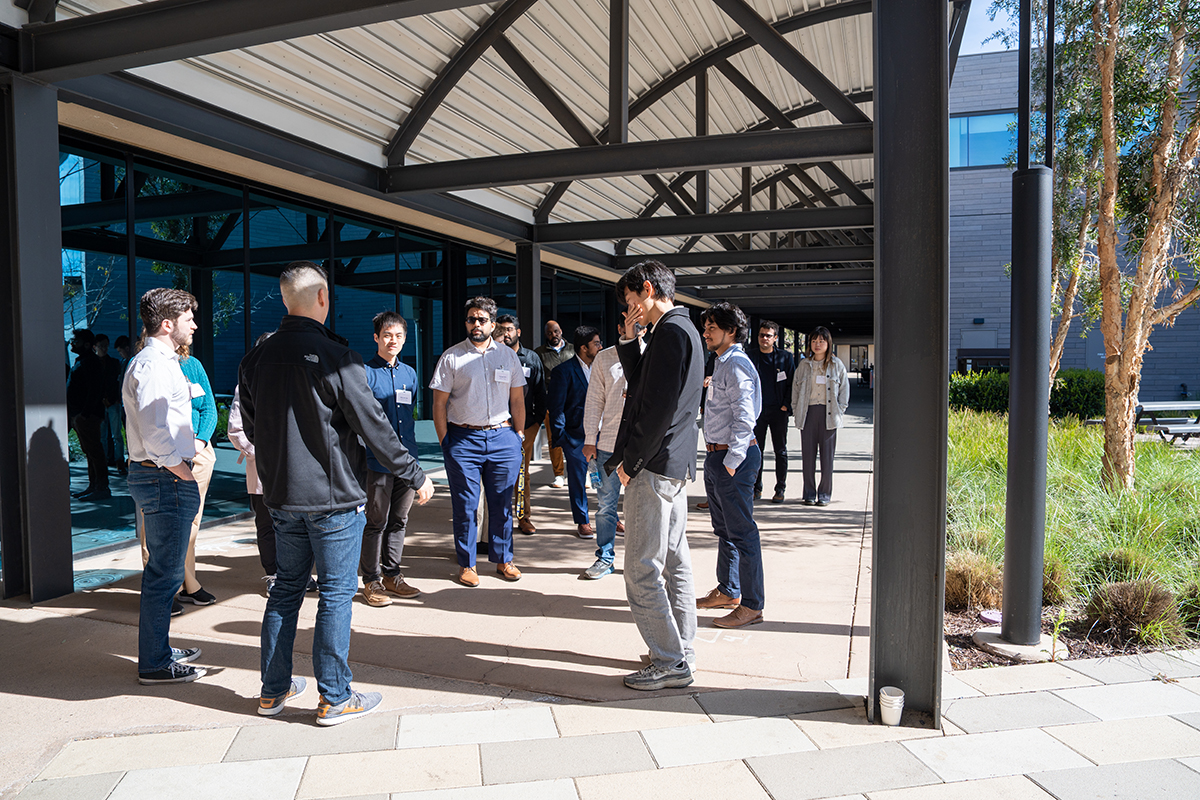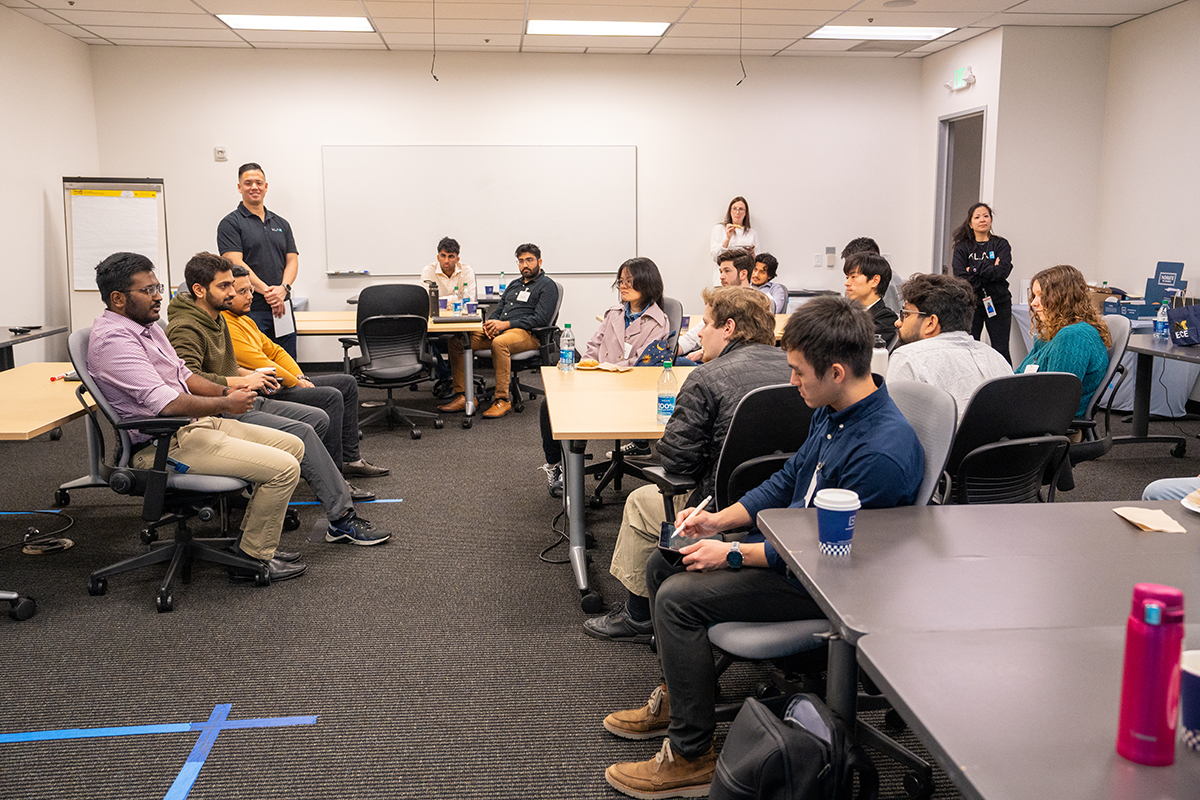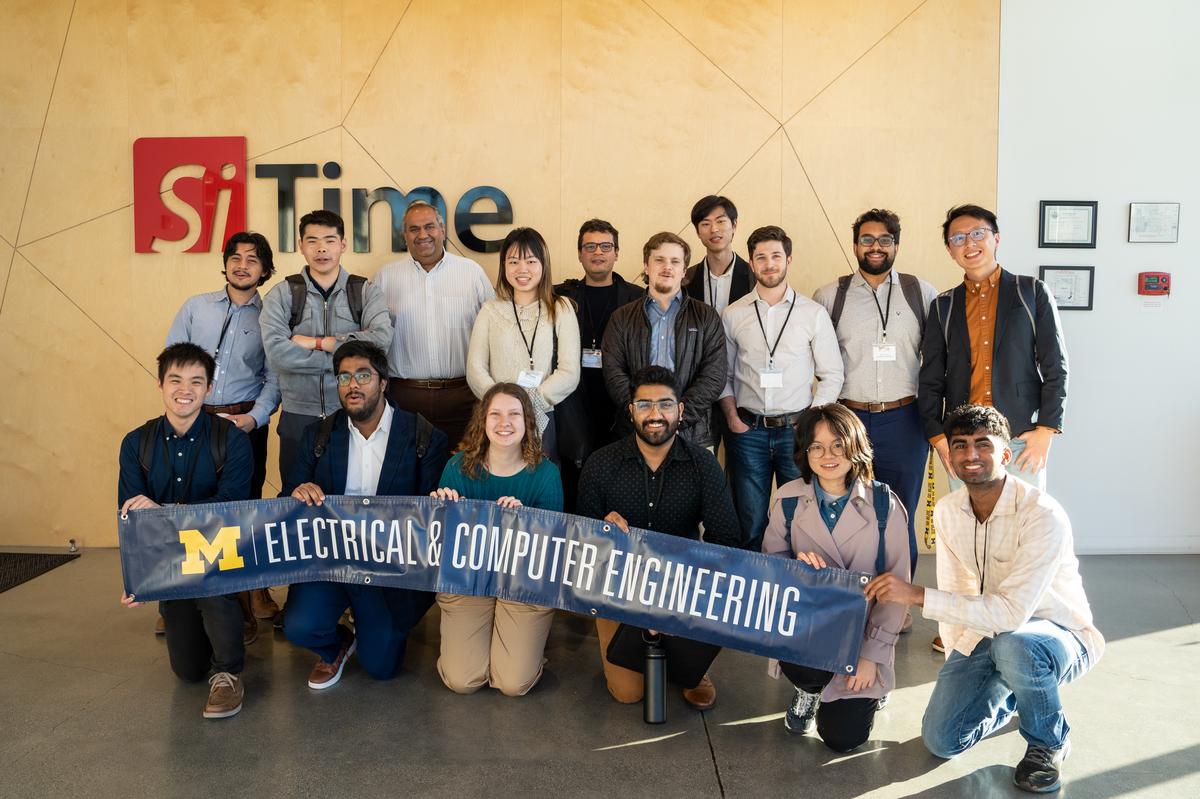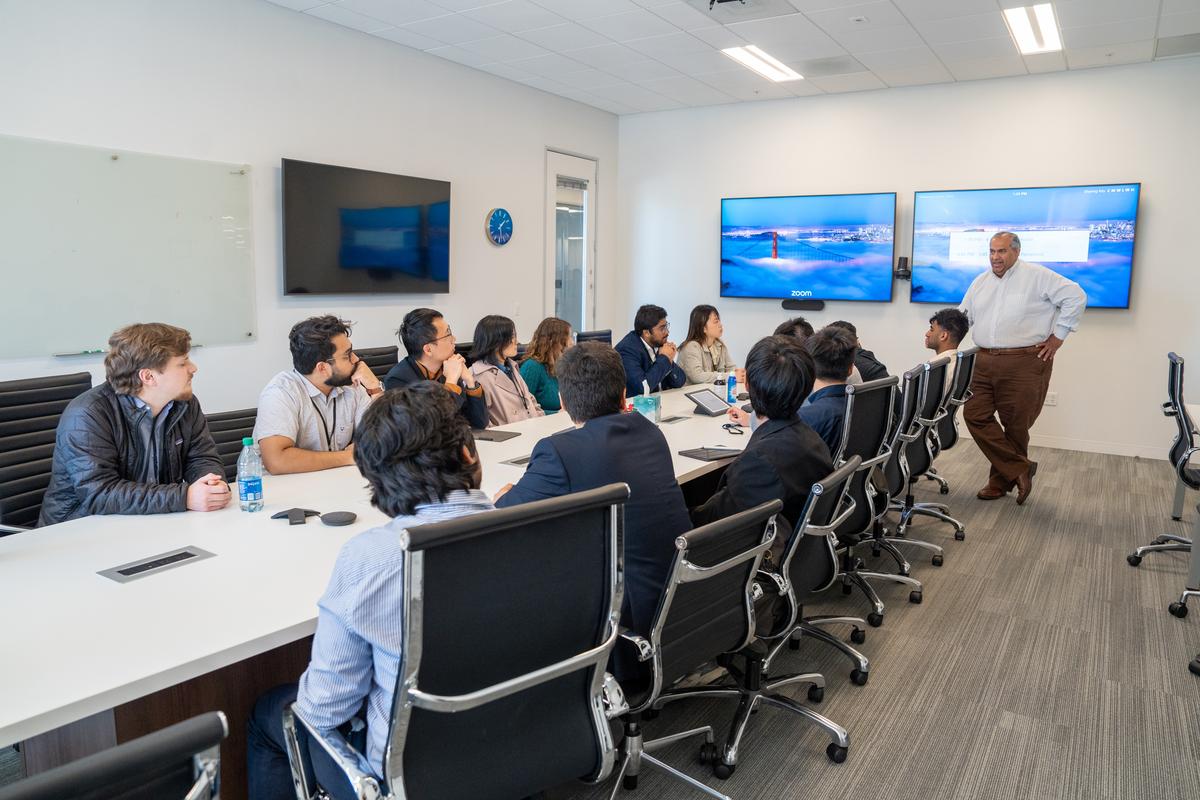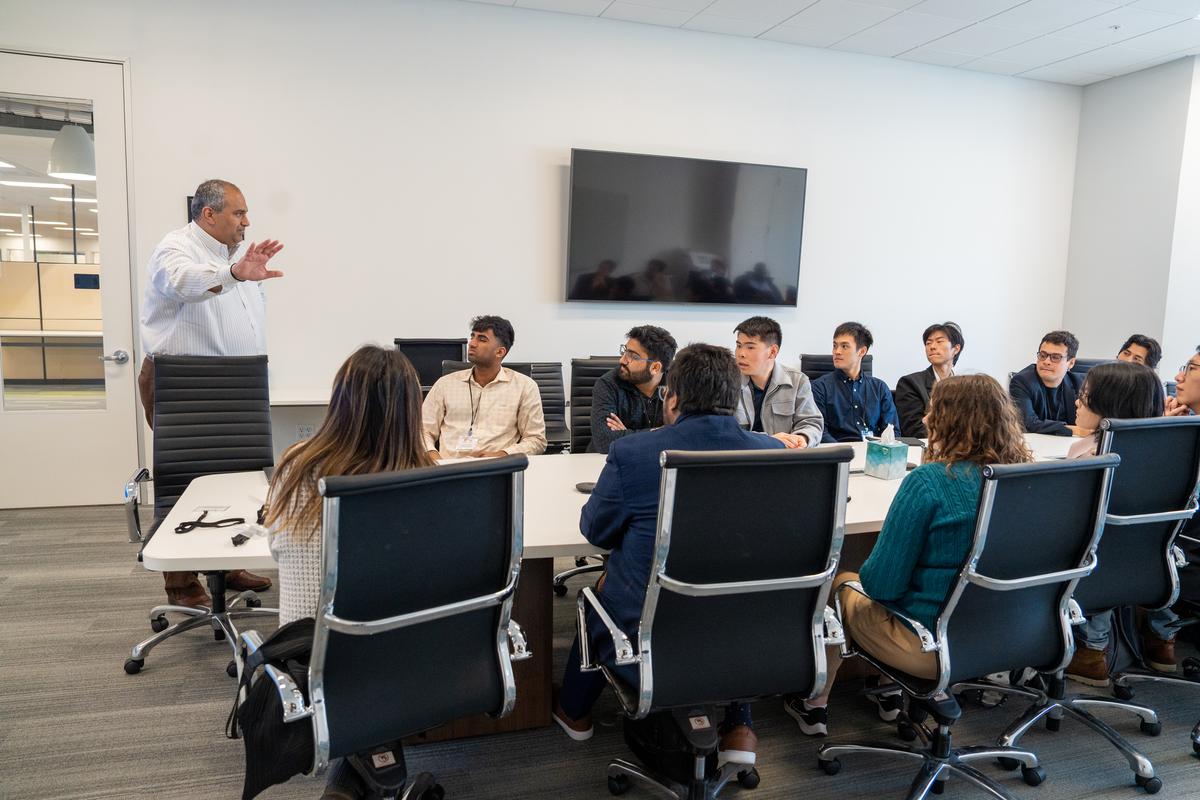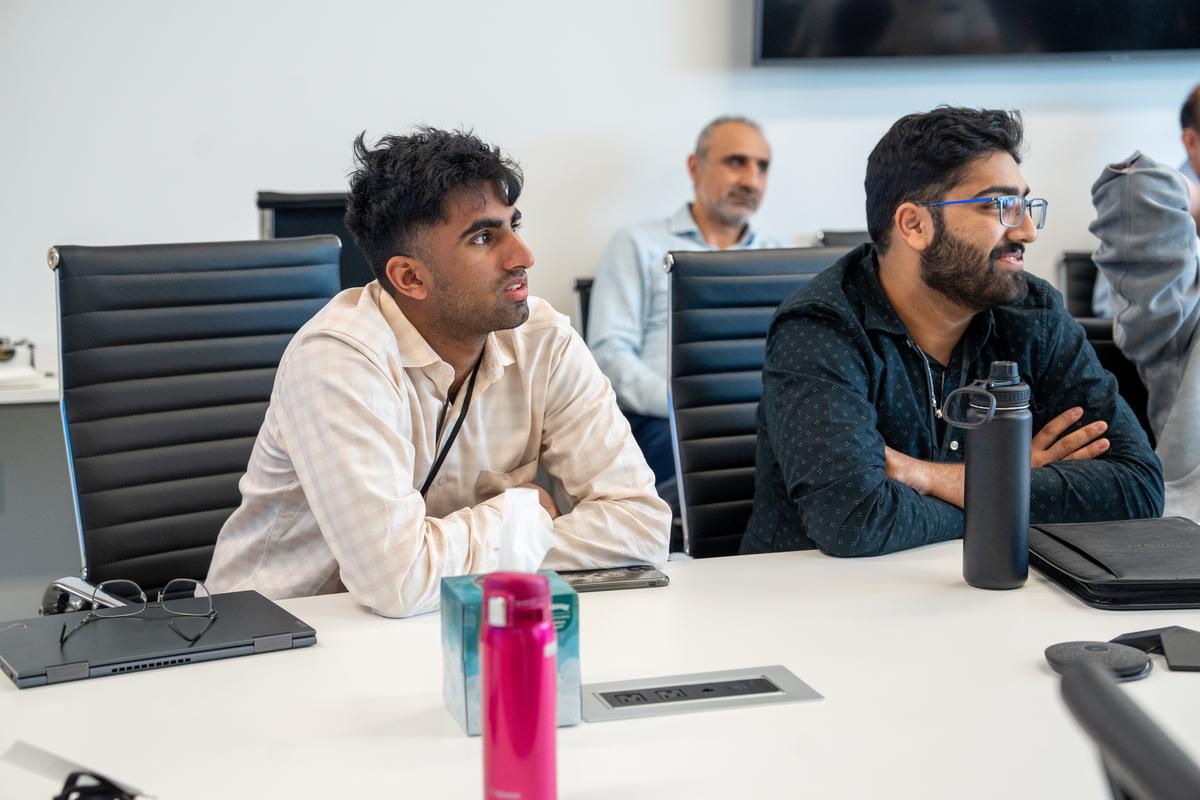ECE Expeditions heads back to Silicon Valley

Since the first ECE Expeditions tours of Ann Arbor companies in 2016, the program has traveled to California, Washington, Texas, and New York, providing Electrical and Computer Engineering students at the University of Michigan with opportunities for exploring the U.S., networking with peers and potential employers, and getting an inside look at the experiences of an industry engineer.
Each year, the program organizes and leads a local trip to tour businesses in Michigan and a cross-country trip to visit businesses in other states.
During U-M’s spring break in late February, a group of undergraduate and graduate students headed back to California to visit Meta, Kodiak Robotics, KLA, and SiTime. They spent two full days meeting U-M alumni and learning about the diverse missions of the companies that they toured.
By participating in this trip, I enhanced my understanding of diverse engineering applications, gained valuable insights from experienced professionals, and expanded my ECE network!
Shih-Chi Liao, ECE PhD student
Meta
Their journey started at Meta, commonly recognized as the parent company of popular apps including Facebook and Instagram. Meta aims to help people around the world connect and make an impact on their communities. Their newest projects focus on generative artificial intelligence and virtual reality.
The students toured Meta Headquarters and experienced some of its many workplace perks, including Epic Cafe, where they ate lunch with some of the engineers. After lunch, they headed across campus to MPK20, a beautiful, open-plan building designed by world-renowned architect Frank Gehry. Under the natural light filtering in through the many windows of MPK20, the students met with alum Helen Ma (BS EE 2004) and a community of over 20 other U-M alumni currently working at Meta.
The Expeditions attendees then discussed engineering careers with three panels of Meta engineers, who spoke to them about front-end and back-end software engineering, as well as product management.
Throughout the day, they experienced the uniquely fun and creative atmosphere at Meta, playing arcade games, checking out a lego wall full of company and university logos, walking through the curated green spaces and architecture on “Classic Campus”, and even making themselves comfortable in a miniature office workspace for a photo opp.
“The innovative atmosphere at Meta was palpable, and the tour provided fascinating insights into their cutting-edge work,” said one attendee.
Kodiak Robotics
The team of students then continued on to learn about autonomous driving technologies at Kodiak Robotics. Kodiak Robotics is a startup company driven to increase road safety and shipping efficiency through its state-of-the-art integration of sensors and artificial intelligence.
Here, attendees shared pizza and conversation with resident engineers, including ECE alum Shurjo Banerjee (MS PhD ECE 2017 2022). After a presentation on automated sensing and perception technology, the students toured the office, laboratory space, and garages––complete with a look at the real driverless semi trucks designed and used by Kodiak Robotics.
“The people at Kodiak Robotics did an amazing job explaining how every part of the autonomous driving system ties in together, and I wish to indulge in such a working atmosphere,” said Aaron Park, ECE master’s student.
KLA
The second day of the trip kicked off with breakfast at the KLA Corporation Headquarters. KLA develops equipment and supplies essential for supporting innovation across electronics and technology, such as computers, autonomous vehicles, space exploration, virtual reality, artificial intelligence, and more. They are a leader in the development of semiconductors, commonly known as chips, and an important component of the supply chain.
KLA’s CEO and President, Rick Wallace, is a University of Michigan ECE alum who was recently honored with the 2023 ECE Alumni Impact Award for his distinguished career. Wallace is also an active member on the board of the University of Michigan Alumni Association. He has stayed very engaged with ECE and the University as his career has progressed.
Students attended a panel discussion and Q&A session, which gave them an additional opportunity to chat with recent graduates working in the semiconductor industry, including two additional Michigan alumni.
However, the highlight of the visit for many of the attendees was their tour of the KLA cleanroom, where they suited up in the head-to-toe “bunny suits” familiar to many U-M Engineering community members from peering through the windows into the Lurie Nanofabrication Facility. Bunny suits are designed to protect the microscopic devices used in nanofabrication research from contamination by the particles and bacteria naturally present on human skin, in the highly controlled cleanroom environment.
“KLA’s emphasis on precision and quality control in semiconductor manufacturing highlighted the critical role electrical engineers play in ensuring flawless production processes,” said Stella Huang, ECE master’s student.
SiTime
This visit to the Bay Area concluded with a tour of SiTime, innovators of silicon microelectromechanical systems (MEMS) semiconductors used for precision timing. Precision timing allows electronic devices to synchronize with each other and keep time accurately. SiTime’s silicon MEMS are smaller than a grain of sand and deviate less than a second over six years.
“SiTime’s working environment and staff are super nice,” said one attendee, “Their experts in MEMS and physics answered many questions patiently.”
The group met with alum Piyush Sevalia (MS EE 1991), Executive Vice President of Marketing, who helped plan and host the ECE Expeditions visit to SiTime. Students also toured the labs and had a chance to directly participate in a Q&A session with Sevalia and other high-level executives about timing devices before concluding their Expedition.
Fostering connection
Many attendees said that their favorite aspect of the ECE Expeditions trip was meeting and socializing with students from other research areas, at different stages of the program, and from diverse backgrounds. This experience also gave them opportunities to build their professional networks and learn about careers that they may not have otherwise considered.
For anyone on the fence whether they want to go on this trip, I think it is 100% worth it!
Sophie Millhouse, ECE undergraduate student
“By participating in this trip, I enhanced my understanding of diverse engineering applications, gained valuable insights from experienced professionals, and expanded my ECE network,” said Shih-Chi Liao, PhD student in ECE, “These experiences directly benefit and position me for a fulfilling career as a well-rounded engineer.”
Huang agreed. “These experiences not only broadened my understanding of engineering roles, but also offered a tangible sense of the workspaces and cultures at these leading tech companies,” she said, “My goal is to draw from the diverse experiences encountered during this expedition to shape a fulfilling and impactful career.”
Huang wasn’t the only student to use her experience to inform her career interests. From looking at automated vehicles scaled up to semi trucks to learning about technology much tinier than the width of a human hair, many students found the number of potential careers branching from a degree in Electrical and Computer Engineering inspiring.
“You get the experience to speak to engineers in the field and learn about the endless paths that an ECE degree can take you,” said Sophie Millhouse, ECE undergraduate, “For anyone on the fence whether they want to go on this trip, I think it is 100% worth it!”
The next local ECE Expeditions trip will be during fall break 2024 and the next cross-country trip will be over spring break 2025. All ECE students are encouraged to apply. You can find out more about the program and read about past Expeditions on their website.

